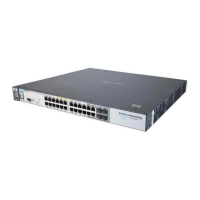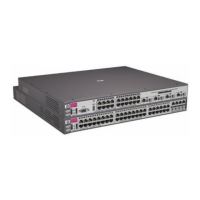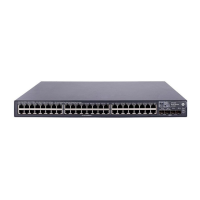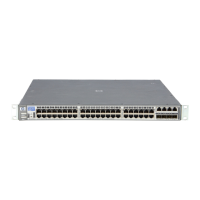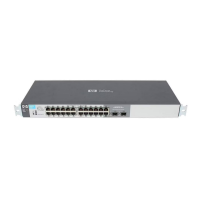Appendix J: Server-to-Switch Distributed Trunking
Distributed Trunking is a link aggregation technique where two or more links across two switches are
aggregated together to form a trunk. This feature overcomes the limitation in IEEE 802.3ad that specifies all
links of a trunk have to be from a single switch. Distributed Trunking improves resiliency and load balancing in
a Layer 2 network.
Distributed Trunking (DT) is included in switch software starting with version K.14. In this initial release, only
Server-to-Switch Distributed Trunking is supported. For each downstream server, it sees the aggregated links as
coming from a single switch, which makes any servers that support standard IEEE 802.3ad interoperate with
Distributed Trunking.
Distributed trunks can be grouped together by configuring two individual DT-LACP trunks with the common
trunk group name. DT ports will be aggregated dynamically after the configuration. The server/switch should
support standard IEEE 802.3ad Link Aggregation Control Protocol (LACP) on the links connecting DT switches. It
is assumed LACP on the servers are configured manually on the server with a list of links to be part of the LACP
trunk.
DT offers load balancing of traffic over multiple physical links. From the server to the switch, the traffic is
balanced according to the load-balancing scheme configured on the server NIC. From the switch to the server,
traffic is balanced according to the MAC destination address (DA) and source address (SA) pair.
Two DT switches can be connected via only one Inter-Switch Connection (ISC), and DT ports can be connected
only to servers. Following is the topology supported.
Figure A10.
70
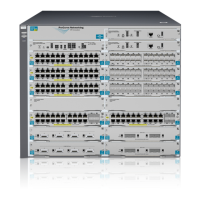
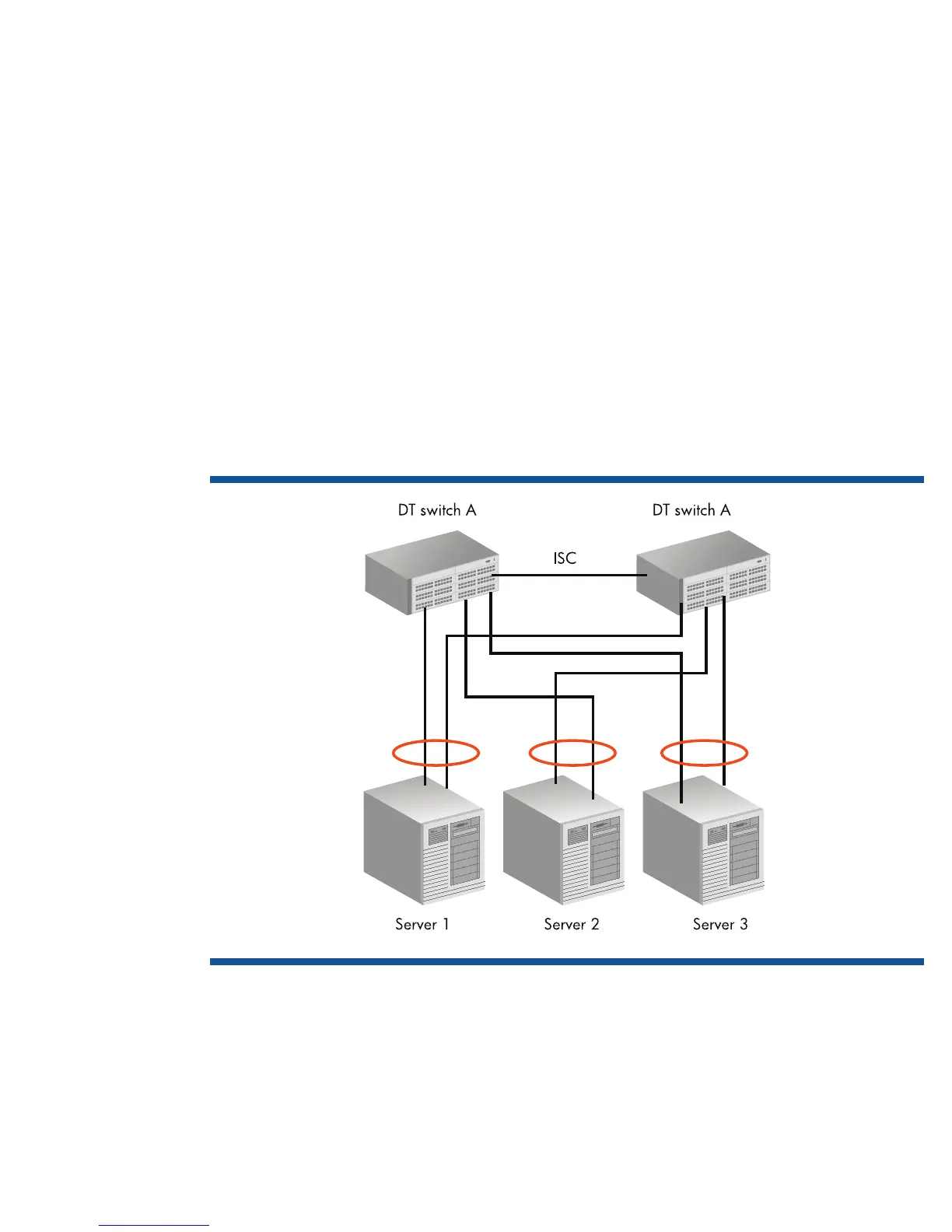